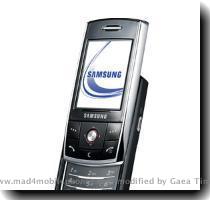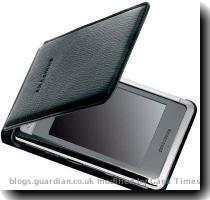Hynix books 4th-quarter net profit as sales surge, memory chip prices rise
By Kelly Olsen, APThursday, January 21, 2010
Hynix books 4Q net profit as sales surge
SEOUL, South Korea — Hynix Semiconductor Inc. bounced back to profit in the fourth quarter of 2009 after a record loss the year before as sales surged and prices for its mainstay computer memory chips increased.
Hynix, the world’s second-largest manufacturer of computer memory chips, earned 657 billion won ($579.8 million) in the three months ended Dec. 31, the company said Thursday in a release. It reported a net loss of 1.69 trillion won a year earlier.
Sales soared 85 percent to 2.8 trillion won from 1.51 trillion won the year before, Hynix said.
The result was the Icheon, South Korea-based company’s second straight quarter of net profit. Hynix recorded its first net profit in two years for the third quarter as prices for memory chips rose amid a rapid recovery in the market.
Hynix is the world’s second-largest manufacturer of DRAM chips, used mostly in personal computers, and ranks No. 3 in NAND flash memory chips, used in products such as digital cameras, music players and smartphones. It competes with world leader and South Korean rival Samsung Electronics Co. as well as Japan’s Toshiba Corp.
Hynix said that average selling prices for its DRAM chips rose 26 percent from the third quarter and shipments increased 12 percent. NAND flash memory prices, however, fell 5 percent. Shipments rose 37 percent.
The sales increase was mainly due to growth in shipments of DRAM and NAND flash as well as improved average selling prices for DRAM, Kim Min-chul, senior vice president for corporate finance, told analysts on a conference call.
Hynix executives painted a positive picture for memory chip demand in 2010 amid expected further recovery in the global economy.
James Kim, vice president for investor relations, said Hynix expects the industry average for DRAM demand to grow between 40 to 50 percent with growth for NAND between 80 to 90 percent.
Kim Min-chul, the finance official, said that applications for smartphones are expected to “drive NAND flash demand” as the popularity of the devices continues.
Mired in red ink, Hynix announced in December 2008 it would make massive cost cuts to free up cash to help fuel a recovery. It slashed the pay of top officials, cut executive positions, encouraged workers to quit voluntarily and made employees take two weeks of unpaid leave. It also received 800 billion won in fresh capital via loans from banks and through a share offering.
“We have strengthened our financial structure through capital-raising, asset sales and cost reduction measures,” Kim said.
Still, the company could not avoid a net loss for the full year, racking up 333 billion won in red ink in 2009. But that was far better than the 4.75 trillion won loss booked in 2008. Sales in 2009 rose 16 percent to 7.91 trillion won.
Shares in Hynix, which released earnings results before the stock opened, rose 2.2 percent to finish at 25,950 won. The shares more than tripled in 2009.

